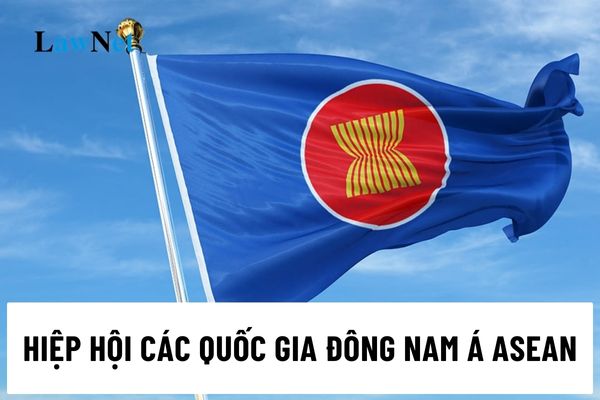How members does Association of Southeast Asian Nations have?
How many members does the Association of Southeast Asian Nations (ASEAN) have?
Currently, the Association of Southeast Asian Nations (ASEAN) consists of 11 member countries listed by their date of accession:
- Founding countries (August 8, 1967):
+ Republic of Indonesia
+ Federation of Malaysia
+ Republic of the Philippines
+ Republic of Singapore
+ Kingdom of Thailand
- Subsequent member countries:
+ State of Brunei Darussalam (January 8, 1984)
+ Socialist Republic of Vietnam (July 28, 1995)
+ Lao People's Democratic Republic (July 23, 1997)
+ Republic of the Union of Myanmar (July 23, 1997)
+ Kingdom of Cambodia (April 30, 1999)
+ Democratic Republic of Timor-Leste (November 11, 2022)
Additionally, the applicant for membership, currently an observer:
State of Papua New Guinea (observer since 1976)
Above are the 11 member countries of the Association of Southeast Asian Nations (ASEAN).

How many members does the Association of Southeast Asian Nations (ASEAN) have? (Internet image)
In which grade are students in Vietnam taught about the Association of Southeast Asian Nations (ASEAN)?
According to Subsection 1, Section 5 of the High School Geography Curriculum issued with Circular 32/2018/TT-BGDDT, 11th-grade students study two content areas on global socio-economic geography, including the Association of Southeast Asian Nations (ASEAN).
Students need to:
- Compare ASEAN with the EU regarding ASEAN's goals, operating mechanisms, and specific cooperation in economics and culture; analyze the achievements and challenges of ASEAN.
- Demonstrate the diverse cooperation and the role of Vietnam in ASEAN.
What is the perspective on developing the 2018 upper secondary school Geography program in Vietnam?
According to Section 2 of the high school Geography Curriculum issued with Circular 32/2018/TT-BGDDT, the perspective on developing the 2018 High School Geography Curriculum is as follows:
- The program ensures the development of students' qualities and competencies.
The geography program clearly identifies the qualities and competencies that can be shaped and developed through the subject.
On one hand, the program is based on the requirements to achieve essential qualities and core competencies as the basis and starting point for selecting educational content; on the other hand, the program shapes and develops the main qualities and core competencies for students by guiding them to absorb and apply the educational content of the subject into practice.
- The program ensures continuity between grades and levels and meets career orientation requirements.
The program's content is designed in three strands: general geography, world geography, and Vietnam geography, including core knowledge and study modules. It develops, expands, and enhances geography education content learned in middle school. It ensures streamlined, fundamental, and up-to-date knowledge of modern geography science and issues of global, regional, Vietnamese, and local development.
The educational content and required achievements of the program consider the suitability with the reality of teaching in high schools in terms of development orientation.
For students with a career orientation related to geography knowledge, the program, aside from core knowledge, offers study modules in each grade to fulfill the requirement for deep specialization and meet career orientation needs.
- The program ensures inheritance and modernity.
The geography program inherits and promotes the advantages of existing programs, adapts the curriculum development experiences from countries with advanced education systems, and aligns with the achievements of modern science and technology; it aligns with the realities of society, education, and students' learning conditions in different regions and areas.
- The program emphasizes integration, practice, and application.
The geography program emphasizes integration, practice, linking educational content with real-world applications to train students to apply geography knowledge to understand and solve a certain extent of practical problems, meeting life demands.
Integration is demonstrated in various levels and forms: integrating natural geography, population socio-geography, and economic geography in the subject; incorporating related topics (environmental education, maritime islands, disaster prevention, climate change; population education, gender, heritage, traffic safety, ...) into geography content; applying knowledge from other subjects (Physics, Chemistry, Biology, History, ...) to clarify geography knowledge; combining knowledge from various fields to construct highly integrated topics.
The program identifies practice, exercise, and application as important content and practical and effective tools to develop students' competencies. This content emphasizes applying geography knowledge into practice to contribute to the development of specific competencies of the subject.
- The program is built with an open approach.
Based on ensuring orientation, required achievements, and core educational content uniformly across the country, the program allocates certain time for schools to guide students in exploring local geography in accordance with their conditions. Simultaneously, the program allows for educational plans tailored to the characteristics of the students and the conditions of educational institutions and localities.
The program is constructed with a general perspective, not too detailed, allowing textbook authors and school teachers to actively and creatively implement the program under the continually developing conditions of science, technology, and society, which often pose new demands on education.

